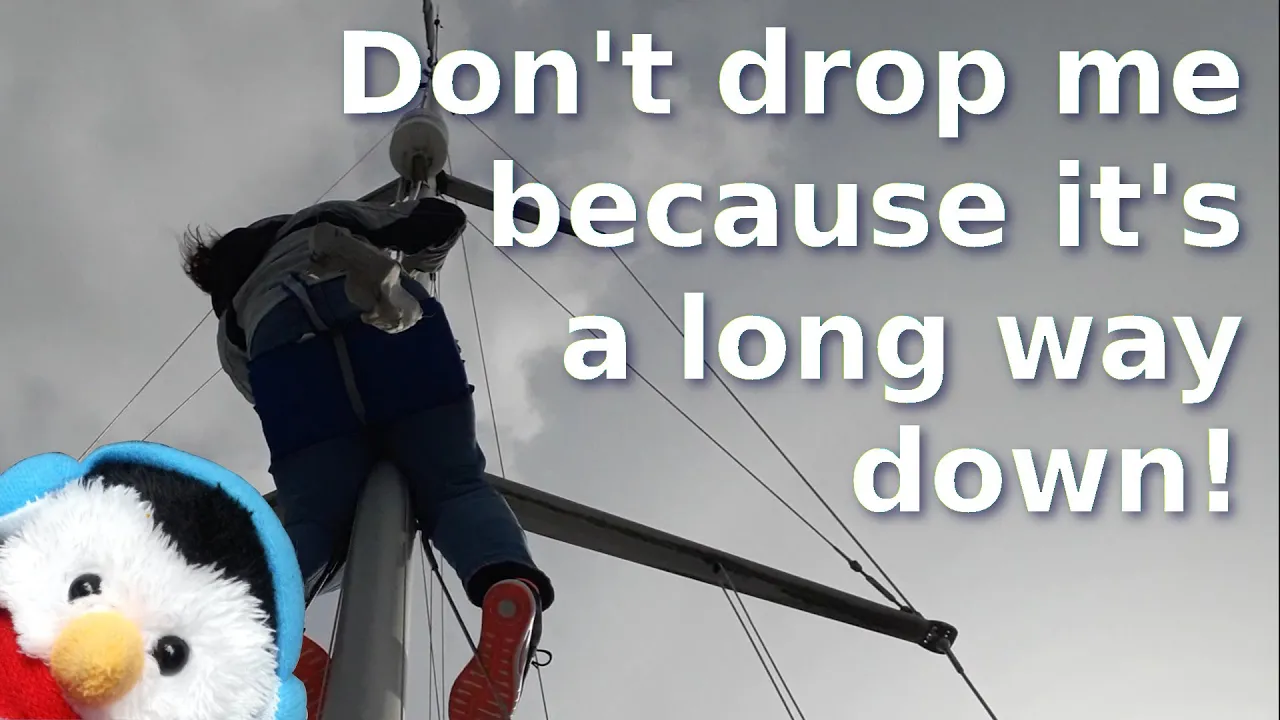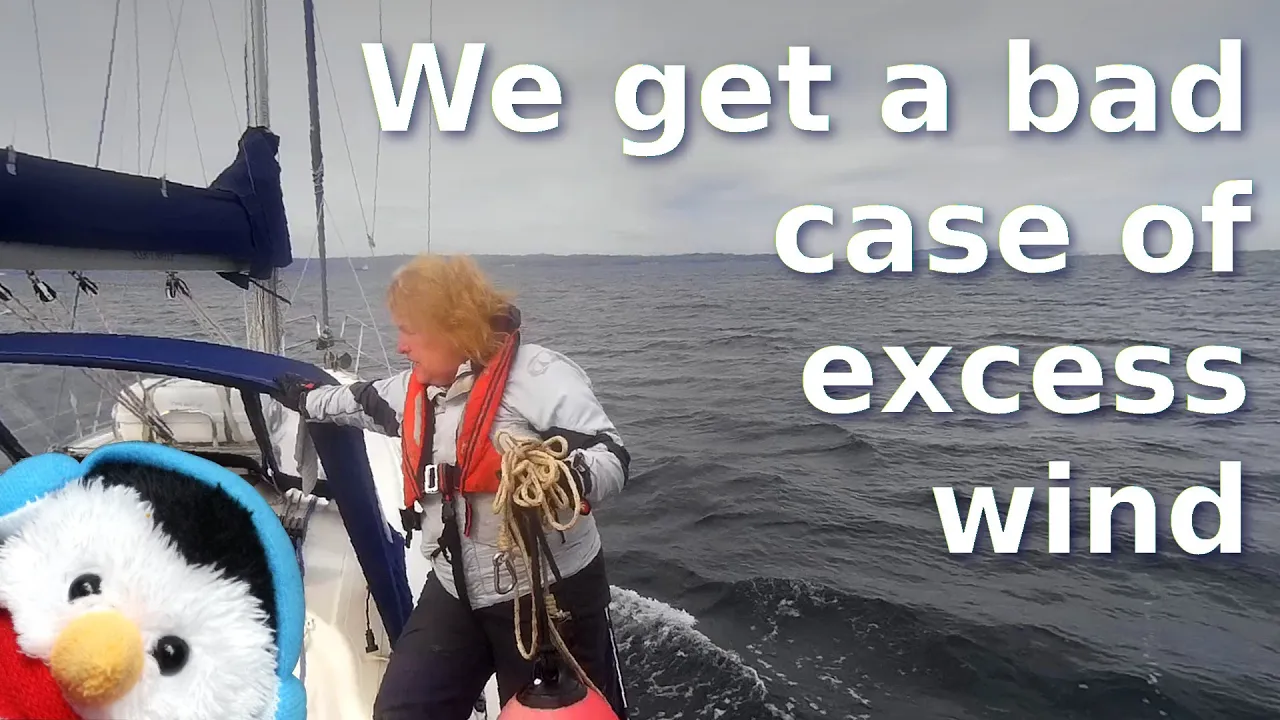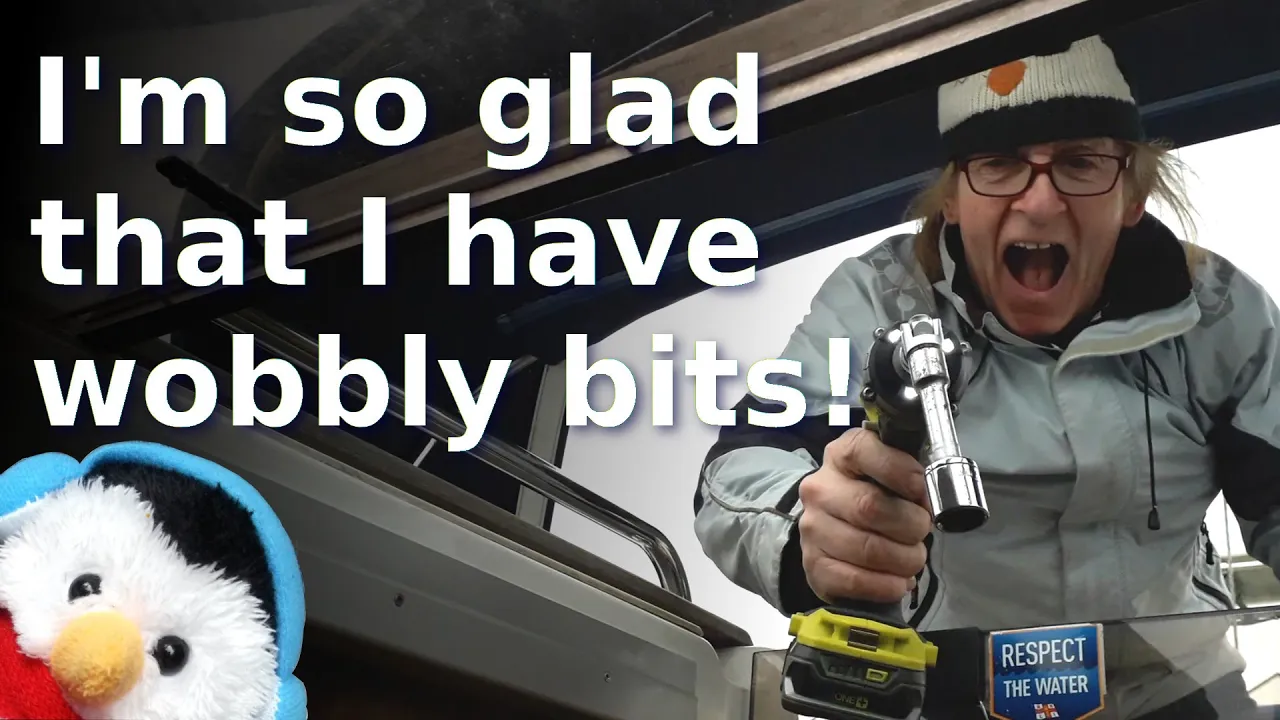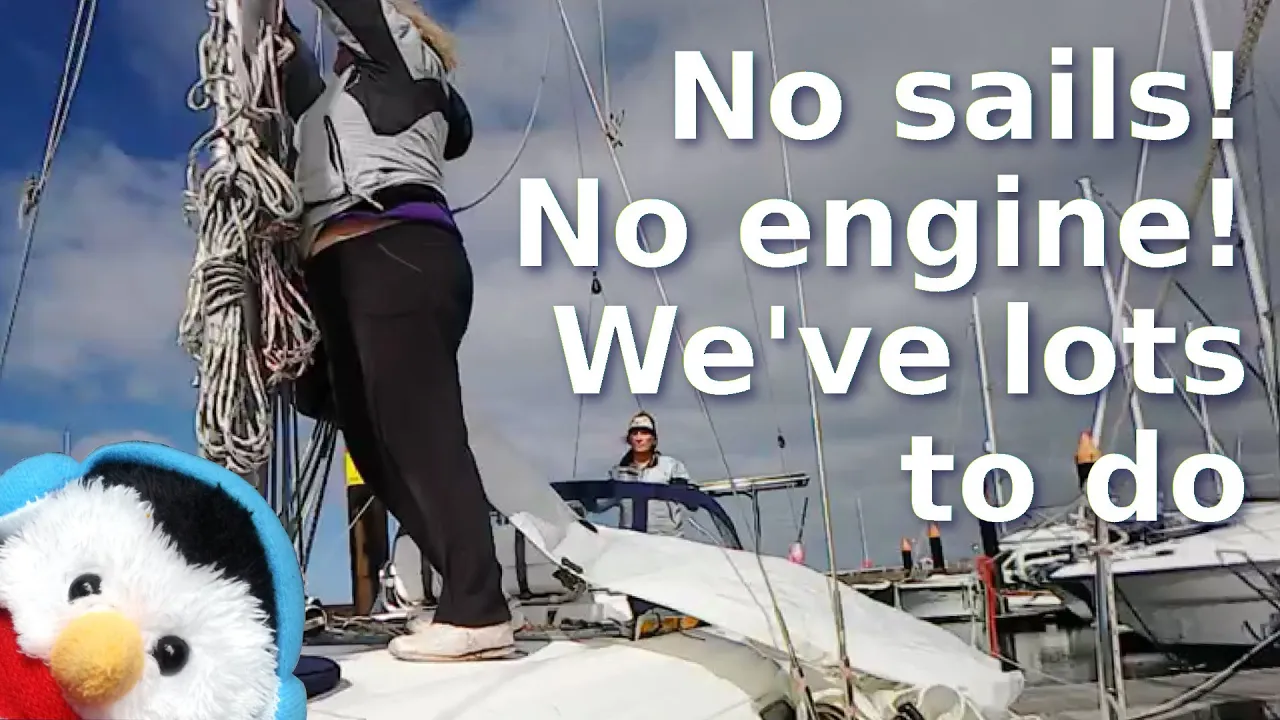Even though I know more about electrics than any other boat related subject, it seemed to be the one that I shied away from the most. The wiring put in by Bavaria looked cracking. The wiring added by our previous owners were another story altogether. The binnacle for example had bits of wire in that were covered in aluminium and tape. In addition to the dodgy looking wiring they also had wires that were just not doing anything. It looked like projects were started and never completed.
New Batteries
As part of the electrics, we needed to upgrade the batteries. We had asked a battery expert and his estimate was that they were from 2005. If this is correct then they had done very well, but realistically they were not holding a charge and they were permanently on charge all the time. That is okay when you are in a Marina, but we want to anchor out and live more on the hook, so it was time to say goodbye to the old batteries. It took us ages to get the new batteries on board, not because they were awkward, but because as we walked along the pontoon with the batteries, we saw a neighbour and he offered to help, so it was a cup of tea and a few biscuits and the batteries were aboard, but in the cockpit. Then another neighbour just happened to come along to take up our offer of tea, an invitation we had extended out to him some three months earlier and he helped us move the batteries from the cockpit and into the saloon, so another cup of tea was made and our biscuit supply was gone.
Changing the batteries was fairly straight forward, as although we got batteries with a larger capacity, they were physically the same size as the old ones. We turned off the AC and the DC power and removed the negative terminal first. We wrapped the ends in cloth as a precaution so that there was no chance of a accidental circuit being created. The battery on the port side was really easy as there is only the one cable running to it, however it was a complete nightmare on the starboard side. Although, we do plan to rewire this part of the boat, it is a project for another day, so we just took off all the old wiring and put it onto the new batteries.
Looking at the old batteries they were clearly had it as they were only measuring 12.2v and they had been on charge for days, while the new batteries were showing 13v which is a lot better. On top of this there were small crystals in and around the filler caps and these were acid.
Binnacle
There was such a hodge podge of wiring in the Binnacle, so the first job was to identify the wires and remove what was not needed. So for example we had a horn which was the most pathetic horn you have ever heard, it had trouble getting the attention of a guy walking along the pontoon behind us, let alone being a warning horn for Salty Lass, so that had to go. We also noticed that you could turn off the instruments at the binnacle, which in our opinion was not needed so that went as well. In the first exercise all we did was remove these two items and neaten up the wiring and it looked so much better.
We decided to remove the panel at the front of the binnacle and replace it with a new panel, so that meant sorting out the wiring for that too. We were adding a new auto pilot and chart plotter, so we found a handy little space under the binnacle which had good access and was really nice and dry. Beverley worked on the Binnacle while I sorted out the new wiring below. I lashed everything together first so that I could test everything. Once it was all tested, I could start removing excess wiring. For example, initially the power to the binnacle run up to where Beverley was working, but now we were having the power run to the space below the binnacle. There were other modifications too, as we ran new cables for the power to the auto pilot, remove all the wiring from the binnacle that was not needed and put in a c-talk ng backbone. I was really happy with this as we had a B&G(Beverley and Gaynor) Chart plotter on NAMEA 2000, two c-talk 1 st60 units which got their information from our depth gauge, logger and wind instrument and the auto pilot which is C-talk NG. They were all able to talk to each other and share information, so fantastic as far as I was concerned. It took a while to wire it all up, but I was really happy with the job once it was all done.
Other jobs
They had taken weeks to do, but in the blog they got barely a mention, for example:-
- Sail bag - The zip on the sail bag was rotten from the end of the sail bag on, but the sail bag had been converted to fit our spare sails which are smaller, so the zip did not go all the way to the end. So I took the zip off, one nights work, removed the dreadful repairs that the previous owner had done, another nights work. Move the zip down the bag, one nights work. Make good the other repairs, two nights work. All that effort and the smallest repair that I did is the bit that is in the video.
- Pump out - We had put new sea-cocks in, so it was only sensible to put in new hoses as well. Now however, instead of the black water tank only going to the sea, we added a T-piece, so that we had the option of being able to pump out. This is so much better for when you are in a Marina, or in the Mediterranean. Once we had added the T-piece and all the new pipes, it was a case of drilling a hole in the deck and adding the pump out facility.
- Side panels - It took me weeks to make the side panels, learning as I went, which is why the back of the side panels have three different stitches in evidence. However they were done and apart from one letter looking really dodgy they looked great. Putting them on the dyneema lines was quite straight forward too as all I had to do was undo the end strings and retie them.
Time to leave
At last, we had completed the last big job and although there was lots of little jobs to do, we could say good bye to Liverpool and what better way than to join in on a Liverpool Yacht club event and use it as our leaving party. The only issue was that I got stuck with the washing up.













